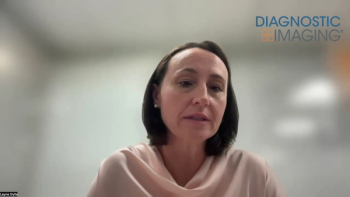
CT Colonography Dose of 100 kVp as Effective as 120 kVp
Reducing the CT colonography radiation dose from 120 kVp to 100 kVp resulted in a significant decrease in dose but minimal decrease in 3D image quality.
Reducing the CT colonography radiation dose from 120 kVp to 100 kVp resulted in a significant decrease in radiation dose but only minimal decrease in 3D image quality, according to a study in the journal
Researchers from Brown University assessed the effect of decreasing tube voltage on dose, contrast-to-noise (CNR) ratio, and 3D image quality in patients undergoing CT colonography. To do so, they looked at 63 consecutive patients who underwent CT colonography supine (at 100 kVp) and prone (11 kVp). All recorded data were stratified by patient anteroposterior diameter in order to determine effects of patient size.
The results showed that there was a 20 percent decrease in volume CT dose index (CTDIvol) and a 16 percent decrease in dose-length (DLP) when tube voltage was decreased. There was also an increase in image noise of 32 percent with the lower dose. Mean attenuation in tagged fluid increased from 395 to 487 HU, but there was no change in mean CNR of tagged fluid regardless of patient size.
Regarding image quality, the researchers found that there was only a slight decrease in 3D quality, from a median score of 4 out of 5, down from 5 out of 5.
Newsletter
Stay at the forefront of radiology with the Diagnostic Imaging newsletter, delivering the latest news, clinical insights, and imaging advancements for today’s radiologists.



























